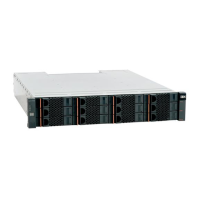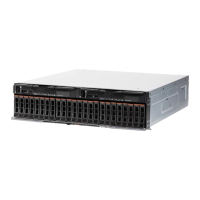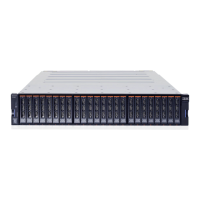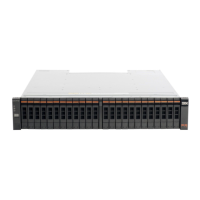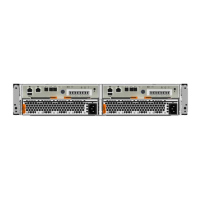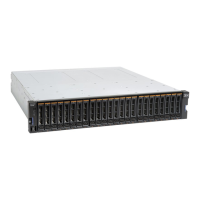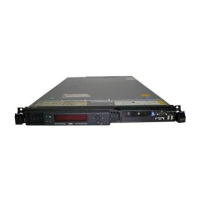Chapter 11. SAN connections and configuration 473
These virtual links can be established over an arbitrary Ethernet network, they must now be
given security that is equivalent to the security in a point-to-point FC network. This security is
accomplished by having the intermediate DCB-capable CN4093 switch “snoop” the FIP
frames that they forward. By using the information that the switch sees during the FIP login
sequence, the switch can determine which devices are connected by using a virtual link. Then
the switch dynamically creates narrowly tailored access control lists (ACLs) that permit
expected FCoE traffic to be exchanged between the appropriate devices and deny all other
undesirable FCoE or FIP traffic. The CN4093 provides FIP snooping function allows the
compute node to log in establishing the VN_Port to VF_Port virtual link.
For more information about FIP, see the FC-BB-5 standard at this website:
http://fcoe.com/09-056v5.pdf
MAC addresses used by end devices
End devices such as the compute nodes (ENodes in the FC-BB-5 standard) use virtual MAC
addresses for their VN_Ports. The FC-BB-5 standard allows these MAC addresses to be
assigned by the FCF during login or by the ENode. MAC addresses assigned by FCFs are
called
Fabric Provided MAC Addresses (FPMAs). MAC addresses assigned by the end
devices are called
Server Provided MAC Addresses (SPMAs). The CNAs and FCFs today
implement only FPMAs, hence it is provided by the IBM Flex System Enterprise Chassis I/O
module switch such as the IBM Flex System Fabric EN4093 10Gb Scalable Switch.
FCFs, fabric mode, and N_Port ID Virtualization
As mentioned previously, a Fibre Channel Forwarder is the FC switching element in an FCoE
network. One of the characteristics of an FC switching element is that it joins the FC fabric as
a
domain. It will give it the CN4093 capability of switching data between the compute node
using FCoE and an external storage controller attached to external FC SAN fabric. It will also
provide connectivity to external FCoE but does not support E-port attachment to switches.
In a mixed FC-FCoE fabric, the FCF also often acts as the conversion device between FC and
FCoE. Each FCF that operates in
full-fabric mode or switch mode as an FC switch joins the
existing FC fabric as a domain. If the CN4093 is not used in this mode and becomes a
gateway device to an external FC or FCoE SAN, then
N_Port ID Virtualization (NPIV) would
be employed. NPIV is described in detail in “N_Port ID Virtualization” on page 508 where
connections involving NPIV equally apply to FCoE as they do in FC connectivity.
11.4.4 Configuring CN4093 for FCoE connectivity
This section is specific to IBM Flex System Fabric CN4093 10Gb Converged Scalable Switch
I/O module as it has both FC and FCoE capability. There are other I/O module 10 Gb
Ethernet switches which can be used for FCoE, such as IBM Flex System Fabric EN4093
10Gb Scalable Switch. To Configure FCoE on IBM Flex System Fabric CN4093 10Gb
Converged Scalable Switch for connectivity to IBM Flex System V7000 Storage Node, it is
necessary to understand the different ports and functions within the switch.
As previously mentioned the CN4093 has FC and FCoE functionality, the physical ports
comprise of internal and external types. The internal ports connect the IBM Flex System
Enterprise Chassis node bays as shown in Figure 11-1 on page 460. IBM Flex System V7000
Storage Node uses these internal ports to connect to the IBM Flex System Fabric CN4093
10Gb Converged Scalable Switch. The IBM Omni external ports can be attached by cable to
external LAN/SAN network equipment depending whether they are configured for Ethernet or
FC mode.
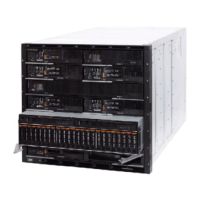
